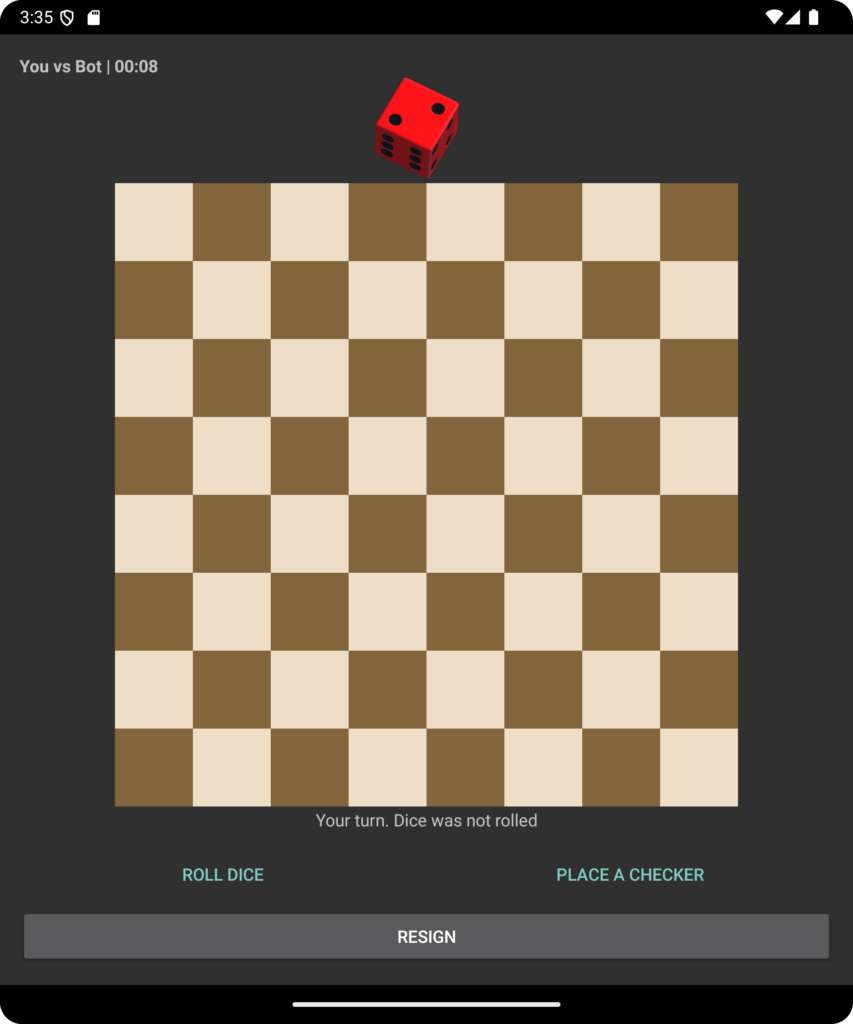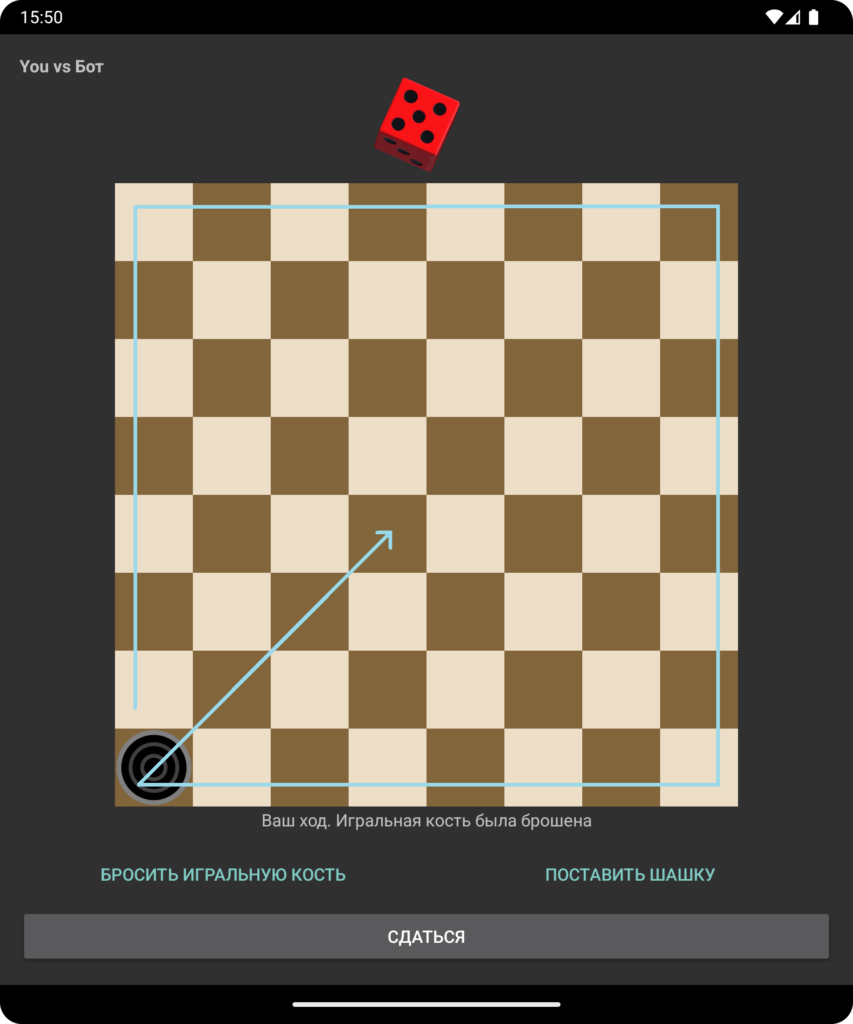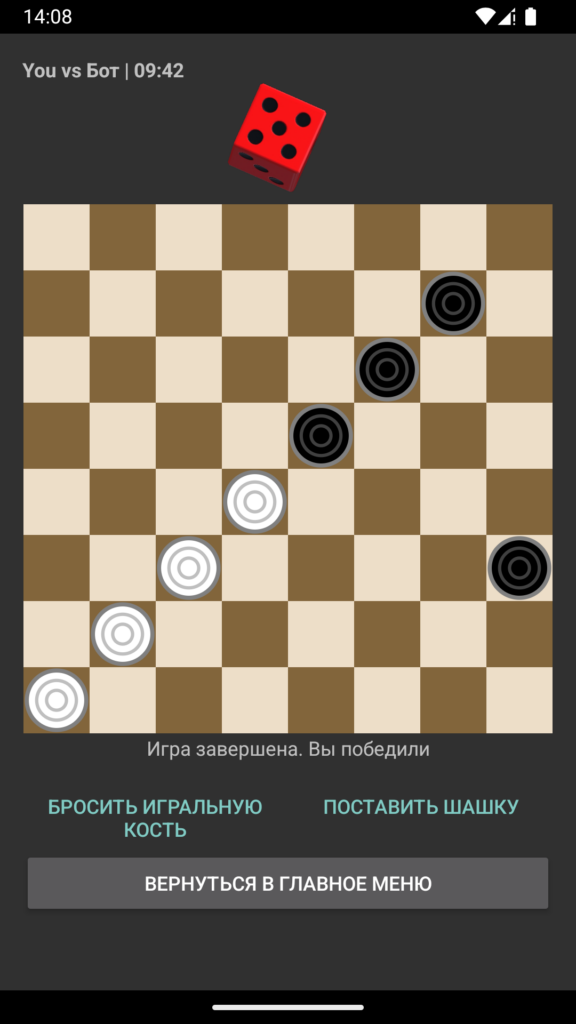
Start the game.
Determine your piece color. If the game offers you the first move, you play as White. Otherwise, you play as Black.
Note: If you have enabled Evaluation Bar, pay attention to the scale below the board: the color of the left column matches your pieces’ color.
Wait for your turn. Click the «Roll Dice» button. Continue until you roll a 6. Click the «Place Checker» button.
Note: Rolling a 6 – regardless of when it happens and how you use it (whether by moving an existing piece forward by 6 squares or placing a new one) – means you must take an extra turn. Click the «Roll Dice» button again.
To move a newly placed piece, click on it, then click on the highlighted yellow square that appears – your checker will move forward by the number rolled on the dice. If no yellow square appears, make sure you have already rolled the dice.

Follow the path shown in the screenshot above: first, move along all the edge squares of the board. Eventually, you will return to your starting point. Then, turn onto the diagonal: your first checker must stop near the center of the board.
Continue playing until your part of the diagonal is completely filled with your checkers. On a standard 8×8 board, you need to place 4 checkers on the diagonal.

General rules
- You cannot jump over any pieces, even your own;
- You cannot skip a turn if you can move at least one piece or place a new one;
- If your move ends on a square occupied by an opponent’s checker, the opponent’s piece is removed from the board;
- You cannot «capture» your own pieces. You also cannot place a new checker if the spawning cell is occupied by another one of your pieces. Thus, no square can ever hold more than one checker;
- When your piece moves onto the diagonal, it becomes safe from capture by the opponent’s checkers. The only exception is the final checker – see Rule 7;
- You cannot have more pieces in play than necessary for victory. For example, on an 8×8 board, you cannot have more than four checkers;
- When your last checker reaches the end of its route (which is the bottom-left square where new checkers are placed), your opponent activates the «last chance» phase – this grants them a final dice roll (all normal rules still apply, including the requirement to roll again after rolling a 6). If their move does not eliminate your checker, you win the game. Otherwise, the game continues. Exception: if, during the «last chance» phase, your opponent does not capture your checker but instead completes their own diagonal, the game ends in a draw;
- By default, if both players skip a combined total of 24 consecutive turns, the game ends in a draw.
Recommendations
- Avoid staying in the opponent’s spawning cell – do not place your checker on the square where their new pieces appear;
- Try to free your spawning cell as soon as possible after placing a new checker;
- In addition to the second recommendation, avoid situations where your piece remains on the spawning cell while waiting to move onto the diagonal – this often leads to missed opportunities;
- Do not rush to cross the opponent’s spawning cell – it may be more beneficial to develop the pieces behind you first. At some point, your opponent may place a checker, and then you will be the one chasing them, rather than the other way around.
Добавить комментарий